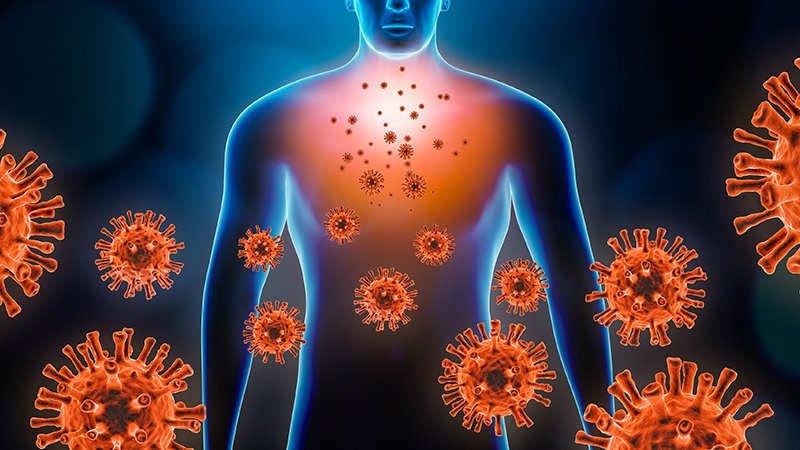Takeda’s HYQVIA Becomes First Facilitated Subcutaneous Immunoglobulin Approved in Japan for Immune Deficiency Disorders
30 December 2024 | Monday | News

Image Source : Public Domain
- HYQVIA [Immune Globulin Infusion 10% (Human) with Recombinant Human Hyaluronidase] is the First and Only Facilitated Subcutaneous Immunoglobulin (fSCIG) Approved in Japan for Agammaglobulinemia and Hypogammaglobulinemia
- Administration of Recombinant Human Hyaluronidase Prior to Immunoglobulin Facilitates Subcutaneous Infusion of Larger Volumes, Potentially Reducing Frequency and Giving Patients More Flexibility
- Approval Expands Takeda’s Portfolio of Differentiated Immunoglobulin Therapies and Reflects the Company’s Commitment to Bring High-Quality Plasma-Derived Therapies to Patients in Japan
HYQVIA is the first plasma-derived therapy for subcutaneous injection in Japan that consists of a combination of one vial of Immunoglobulin 10% and one vial of Recombinant Human Hyaluronidase PH20 (rHuPH20). The administration of rHuPH20 increases the dispersion and absorption of immunoglobulin (IG) in the subcutaneous tissue, allowing larger volumes to be infused in the infusion site. This allows for less frequent dosing compared to other subcutaneous IG products, while avoiding the need for venous access. The ability to infuse a larger infusion volume is expected to increase administration flexibility for patients with agammaglobulinemia or hypogammaglobulinemia by decreasing the dosing frequency to once every 3 or 4 weeks, as compared to weekly or bi-weekly with conventional SCIG treatments.
The approval is based on data from two pivotal Phase 3, open-label, non-controlled studies evaluating the efficacy, safety, tolerability and pharmacokinetics in Japanese subjects with PID (NCT05150340, NCT05513586). In these studies, the efficacy and safety profile of HYQVIA in 16 patients aged 2 years or older in Japan were evaluated based on the results of the clinical trials. The Geo Mean of IgG trough level at the last 3 visits was 9.494g/L and was maintained at level comparable to treatment with intravenous or subcutaneous immunoglobulin (Geo Mean of IgG trough level 9.624g/L). The major adverse reactions were pyrexia 5 patients (31.3%) and infusion site erythema, injection site erythema, infusion site swelling, infusion site pain, and headache (12.5%)1. Data from two Phase 3 clinical trials conducted in patients with PID in North America (NCT00814320, NCT01175213) was also included in the submission.
“We are delighted that HYQVIA, approved in more than 40 countries worldwide, has now been approved in Japan,” said Naoyoshi Hirota, Regional Head of Research & Development for Takeda’s Plasma-Derived Therapies Business Unit in Japan. “The subcutaneous IG therapies currently available in Japan for patients with agammaglobulinemia or hypogammaglobulinemia require infusion once every week or every 2 weeks. We are proud to offer Japanese patients the first and only facilitated subcutaneous treatment option that offers a reduced dosing frequency of every 3 or 4 weeks.”
“There is a high unmet need for plasma-derived therapies (PDTs) in patients in Japan, which is anticipated to increase as education and timely diagnosis rates continue to improve,” said Kristina Allikmets, head of research & development for Takeda’s Plasma-Derived Therapies Business Unit. “The approval of HYQVIA, the first and only facilitated SCIG treatment, is further evidence of Takeda’s commitment to add to the standard of care for patients in Japan. We look forward to continuing to bring new therapeutic options that support and enhance the experience of patients in our home country throughout the next decade.”
With this approval, Takeda is now able to offer a range of SCIG therapies to patients based on their individual administrative needs, reflecting the company’s commitment to offer patients in Japan a broader choice of treatment options. It also follows the announcement of a significant investment to build a new manufacturing facility for plasma-derived therapies (PDTs) in Osaka, Japan. HYQVIA is also currently under review in Japan for additional indications.
Most Read
- The New AI Gold Rush: Western Pharma’s Billion-Dollar Bet on Chinese Biotech
- Top 25 Biotech & Biopharma Leaders in Sustainable Innovation, 2025
- China’s Biopharma Dealmaking Surges in H1 2025, Driven by Record Licensing and Oncology Focus
- Chikungunya in China: How a “Forgotten” Arbovirus Found the Perfect Storm
- How Innovation Gaps in Biopharma Raise New Safety Concerns
- Smart Implants and the Future of Musculoskeletal Injury Treatment
- How Ethical Gaps in Psychiatry Could Undermine Biopharma Progress
- The Evolving Landscape of Women’s Health Innovation in the Asia-Pacific
- Using NLP-Driven Decision Support in Emergency Health Assistance
- Taiwan Steps Into the Global Spotlight With a New Cancer Therapy
- The Role of Unique Device Identification (UDI) in Tracing Medical Device Safety
- The Importance of a Patient’s Mental Health During Clinical Trials
Bio Jobs
- The State of Biotech and Life Science Jobs in Asia Pacific – 2025
- Avantor’s New CEO Ligner Aims to Unlock Global Potential and Deliver Shareholder Value
- AstraZeneca Commits $50 Billion to U.S. Expansion by 2030 in Biggest-Ever Global Investment
- Thermo Fisher, SAMRC, and South Africa’s Department of Science and Innovation Launch CATIR to Nurture Next-Gen Scientists
- Cube Biotech Appoints Former Sartorius CEO Dr. Joachim Kreuzburg to Board of Directors
- FDA’s AI Transition Marks a Turning Point in Drug Review: Industry Faces Pressure to Adapt Amid 20% Workforce Cut
- WuXi XDC Completes Mechanical Build of Singapore Bioconjugate Manufacturing Hub
News
Editor Picks











